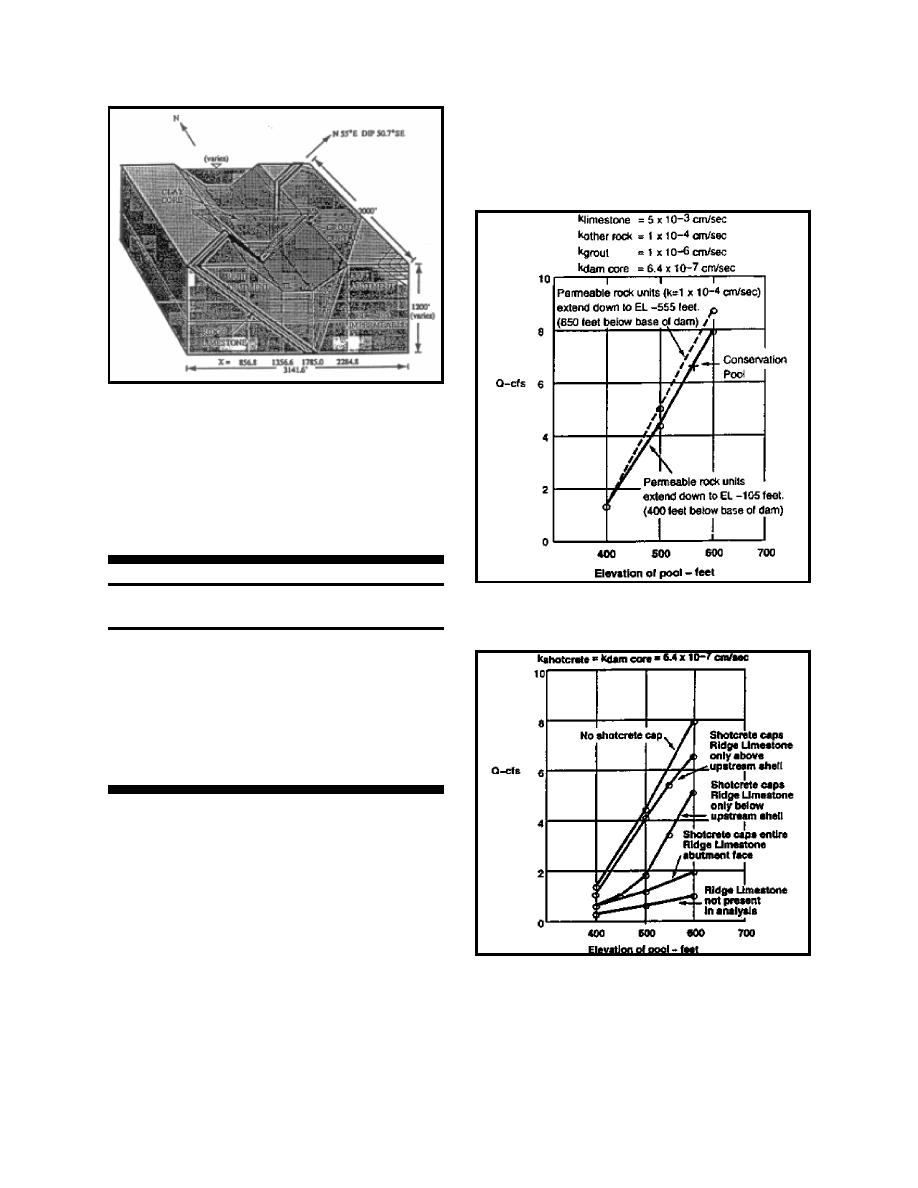
ETL 1110-2-544
31 Jul 95
inherent in the conventional flow net analysis which is
performed manually. Palmerton noted that for
"situations where multiple zones and anisotropic
permeability must be included, a numerical model is,
for all practical purposes, mandated."
Figure 44. Pertinent dimensions and features of 3-D
finite element mesh
element runs were very extensive. Computer routines
were developed to extract piezometric heads, flows,
and the position of the phreatic surface from the output
of the 3-D seepage code. The permeabilities used in
this analysis are listed in Table 1.
Table 1. Permeabilities of Materials for Cerrillos Dam
Permeability
Figure 45. Predicted seepage discharges for
Material
(cm/sec)
various pool levels from 3-D FE analysis
1.0 x 10-6 cm/sec
Grout Curtain
6.4 x 10-7 cm/sec
Impermeable clay core of dam
5.0 x 10-3 cm/sec
Ridge Limestone Unit
1.0 x 10-4 cm/sec
All other foundation rock units above
el -105 ft
All foundation rock units below
Impermeable
el -105 ft
Palmerton concluded that 3-D finite element solutions
offer an effective engineering approach toward the
evaluation of proposed corrective measures for
reducing or controlling seepage under and through
embankment dams where conditions warrant
accounting for
3-D effects. Additionally, he recommended the use
of 2-D finite element analysis for 2-D situations
because of the limitations and oversimplifications
Figure 46. Effect of shotcrete placement on left
valley wall
A-33



 Previous Page
Previous Page
